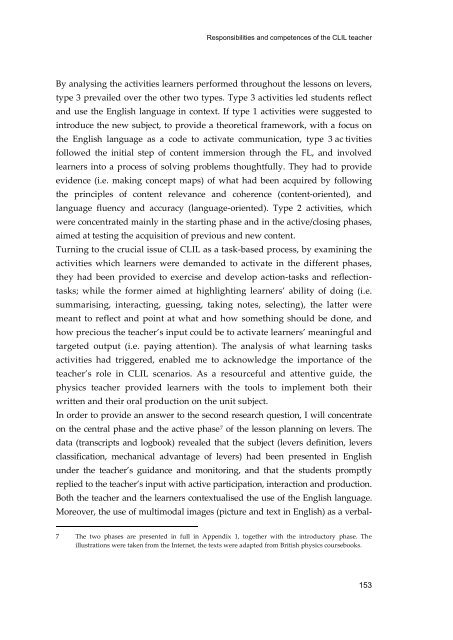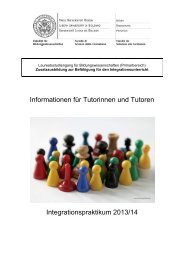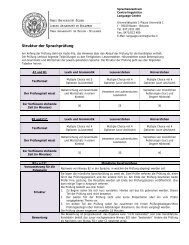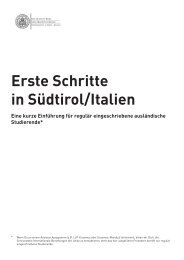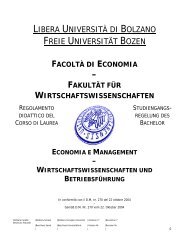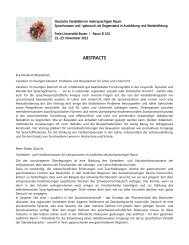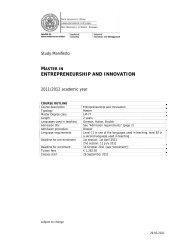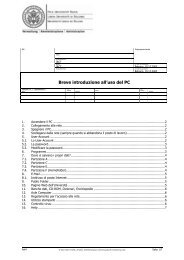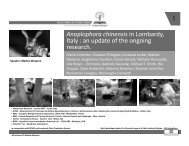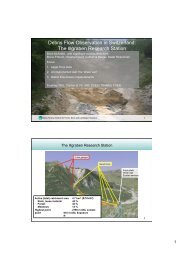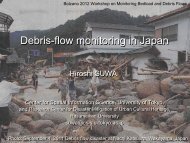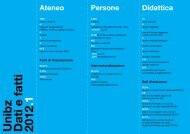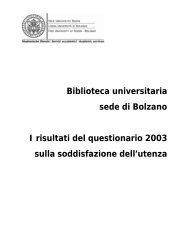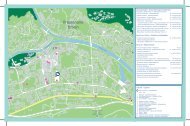Multilinguismo, CLIL e innovazione didattica - Libera Università di ...
Multilinguismo, CLIL e innovazione didattica - Libera Università di ...
Multilinguismo, CLIL e innovazione didattica - Libera Università di ...
You also want an ePaper? Increase the reach of your titles
YUMPU automatically turns print PDFs into web optimized ePapers that Google loves.
Responsibilities and competences of the <strong>CLIL</strong> teacher<br />
By analysing the activities learners performed throughout the lessons on levers,<br />
type 3 prevailed over the other two types. Type 3 activities led students reflect<br />
and use the English language in context. If type 1 activities were suggested to<br />
introduce the new subject, to provide a theoretical framework, with a focus on<br />
the English language as a code to activate communication, type 3 ac tivities<br />
followed the initial step of content immersion through the FL, and involved<br />
learners into a process of solving problems thoughtfully. They had to provide<br />
evidence (i.e. making concept maps) of what had been acquired by following<br />
the principles of content relevance and coherence (content-oriented), and<br />
language fluency and accuracy (language-oriented). Type 2 activities, which<br />
were concentrated mainly in the starting phase and in the active/closing phases,<br />
aimed at testing the acquisition of previous and new content.<br />
Turning to the crucial issue of <strong>CLIL</strong> as a task-based process, by examining the<br />
activities which learners were demanded to activate in the <strong>di</strong>fferent phases,<br />
they had been provided to exercise and develop action-tasks and reflectiontasks;<br />
while the former aimed at highlighting learners’ ability of doing (i.e.<br />
summarising, interacting, guessing, taking notes, selecting), the latter were<br />
meant to reflect and point at what and how something should be done, and<br />
how precious the teacher’s input could be to activate learners’ meaningful and<br />
targeted output (i.e. paying attention). The analysis of what learning tasks<br />
activities had triggered, enabled me to acknowledge the importance of the<br />
teacher’s role in <strong>CLIL</strong> scenarios. As a resourceful and attentive guide, the<br />
physics teacher provided learners with the tools to implement both their<br />
written and their oral production on the unit subject.<br />
In order to provide an answer to the second research question, I will concentrate<br />
on the central phase and the active phase 7 of the lesson planning on levers. The<br />
data (transcripts and logbook) revealed that the subject (levers definition, levers<br />
classification, mechanical advantage of levers) had been presented in English<br />
under the teacher’s guidance and monitoring, and that the students promptly<br />
replied to the teacher’s input with active participation, interaction and production.<br />
Both the teacher and the learners contextualised the use of the English language.<br />
Moreover, the use of multimodal images (picture and text in English) as a verbal-<br />
7 The two phases are presented in full in Appen<strong>di</strong>x 1, together with the introductory phase. The<br />
illustrations were taken from the Internet, the texts were adapted from British physics coursebooks.<br />
153


